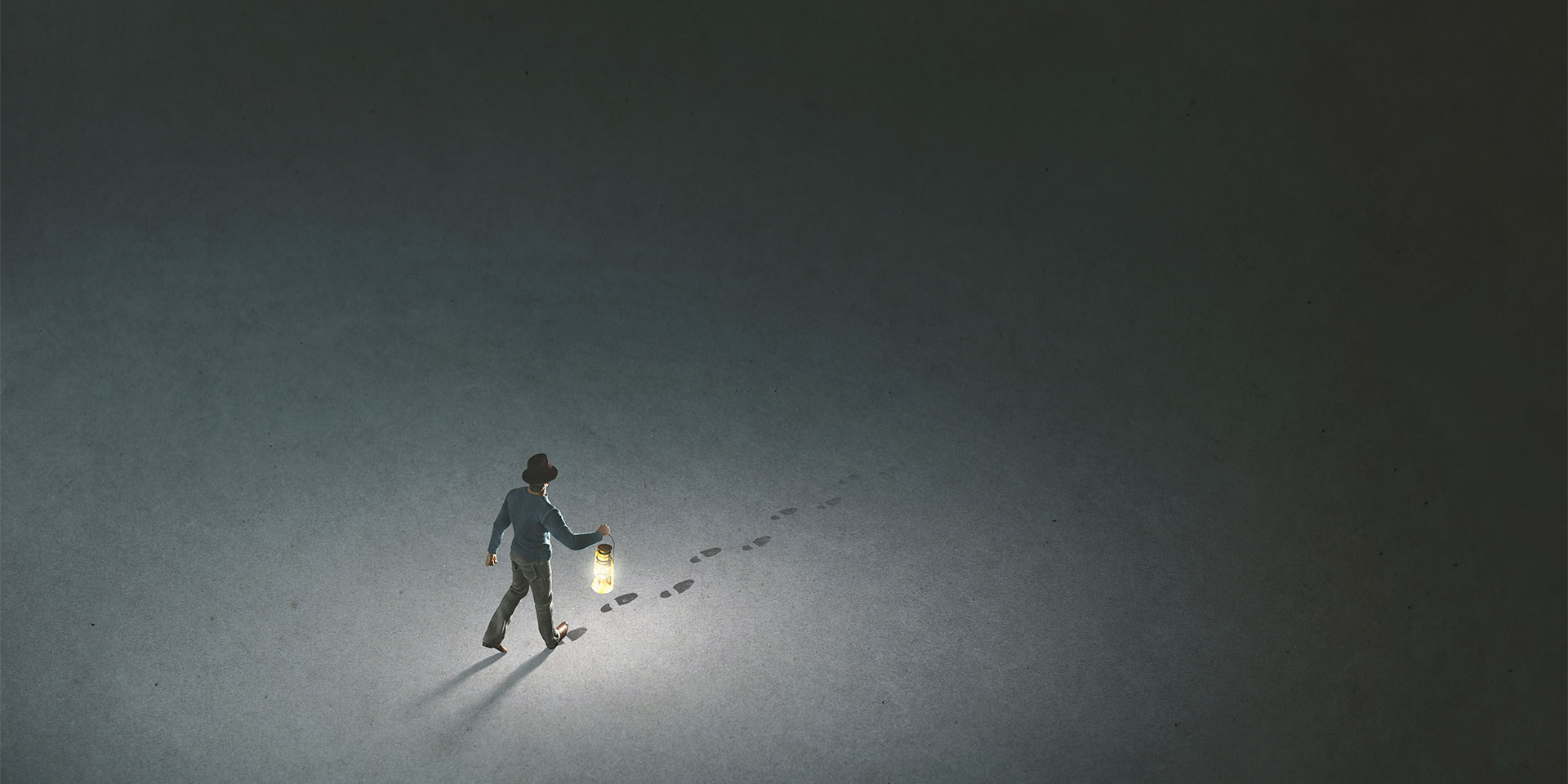Critical thinking is not a cure-all, but it proves very useful in dealing with, clarifying, and solving some decision-making problems, as well as the thought and belief disputes which occupy our minds.
Enhance your critical thinking. Read more of our articles on the topic.
It is useful when one needs to reflect on fields which require a logical, rational approach, as well as debates, exchange of ideas, consultations, and argumentative confrontations on different (even opposite) opinions and visions. Using critical thinking also gives us pause to hold out on a decision until all of the data required to solve a problem is at hand.
Of course, there are fields in which critical thinking proves futile, even inappropriate. It can happen that, in certain contexts, it generates bias or a one-sided approach. I will end off by pointing to the domains where critical thinking does not apply. I will also expose its limits, as well as the remedies to these limits its theorists have proposed. Finally, I will touch upon one extra remedy, in light of my experience in teaching critical thinking.
Degrees of applicability
As logician Dragan Sotianovici argues, critical thinking is “something we all already possess, to a greater or lesser degree, but is, at the same time, a skill we can improve, through reflection and exercise.”[1]
If we look at it as a discipline to be studied, we will notice that critical thinking has a composite character, integrating data belonging to several different disciplines and fields: logic, argumentation theory, speech analysis, analytical philosophy, rhetoric, linguistics, et cetera. It helps us organise our ideas, our conscious or unconscious assumptions, and our rational or irrational beliefs. It allows us to weigh the foundation of our thinking—evidence, facts, and arguments. More specifically, it helps clarify the position we take towards the problems that keep our minds busy. It helps us choose and decide on something which will determine the road we are to follow in life and, eventually, life itself.
Now, I will illustrate the applicability of critical thinking, considering a perpetual problem perceived by the human consciousness: the problem of death. We will therefore imagine a scale of areas in which critical thinking is applicable to the problem of death:
- At the maximum relevance end we would find logic, which requires us to conform to the patterns of correct thinking, to create valid reasoning and to draw inerrant conclusions. Here the classical example would be the following line of reasoning: starting from the premises, “all humans are mortal” and “I am a human”, we indubitably reach the conclusion that “I am mortal”. However, if the human being only had to solve these kinds of problems, it would actually be a rational robot. The human being is obviously much more complex than this, and consists of a kaleidoscope of reason and feeling, ideas and emotions, values and instincts, and so on.
- The middle of the scale includes domains in which the rational interweaves, at times harmoniously and at others dis-harmoniously, with the non-rational. These are fields of human interaction, morality, religion, axiology, the psyche, and others. What we need to keep in mind is that the non-rational is not the same as the irrational. Feelings, emotions, reflexes, memory processes, instincts or willpower have a completely different nature than rational processes. However, just some of them are irrational, in the negative sense of the word (hate, anger, attack reflexes, fake memory, criminal instincts, a desire for revenge).
In these “middle” fields, critical thinking may bring clarification, establish values, rules and principles, and reorganise the internal chaos in which a person’s reason is jammed. Reason calls upon argumentation in this case, but not in a strictly logical way, because we are not dealing with true or false judgements, but rather with diverse opinions and perspectives.
This is the realm of debates, persuasion, shaping or reshaping certain opinions, and the search for ideas which are accepted and acceptable. These can be used to evaluate other ideas, in order to have a solid basis for conclusions worth adopting.
For instance, when dealing with irrational statements which tend to lead to bad decisions, a lucid analysis may change that decision. If a person with suicidal thoughts says: “When life hurts you, you have the right to turn your back on it”, then it’s worth making the effort, using the instruments of critical thinking, to show that person what is so deeply wrong both with the statement as well as with the conception.
We could help them understand that it’s inappropriate to talk about life as if it is a person, that this does not show recognition of its complexity, and that this, as with any other simplification, leads to unfounded conclusions.
Furthermore, we could point to the overly dramatic way the person is thinking about things, reminding them that real life is not performed on a stage as a succession of scripted lines, and that death equals nonexistence—not a memorable line.
If the cultural register is relevant for that person, we might suggest a different perspective on suicide, through another approach: “I do not know what to do. I would die, but I look in the mirror and pity the eyes which will never see the light of day again…”[2]
We could argue that the “right” the person refers to is not an actual right, as it does not benefit them in any way. On the contrary, it robs them of their inalienable right to life, which we all benefit from, regardless of the religious perspective we have on the origins of life.
From a religious perspective, we could tell them about the principle of divine pedagogy, according to which “in all things God works for the good of those who love him” (Romans 8:28), including in the painful experiences. They are not comfortable or pleasant, but they are good, polishing our character as one does a diamond.
We could also help them distinguish between feelings and values, and help them decide which is worthy of leading them. In this case, feelings are negative, subjective, deceiving, and also fleeting (whether we talk about despair or suffering). Values, on the other hand, are constant, giving meaning to our existence. They also involve feelings, but feelings related to things that are generally accepted as valuable: the preciousness of life, the unique personality of each human being, the destiny and the richness of experiences we create, or the chance to save a soul for the world of immortal harmony.
3) At the far end of the scale representing the relevance of critical thinking, we find, in my opinion, some forms of art, mystery, metaphysics, a child’s thinking, wild and mythical thinking, and more. It is inappropriate, to say the least, to try to logically or rationally “analyse” metaphors, allegories, symbols, dreams, revelations, prophecies, reveries, intuitions, and fantasies. They are hard to access through critical thinking, as are poetic jewels like Eminescu’s reflections: “I never thought I’d ever learn to die” or the popular verses of an anonymous writer: “the sky is tall,/the world is wide/good thing the forest is in leaf…/no one would know I’m gone,/they would just see I’m no longer there.”
The downside of critical thinking, and possible remedies
Going through the aforementioned scale, one can conclude that critical thinking reaches its limits when it comes to subjective problems, especially where it engages with strong beliefs and emotions, and where it is faced with different perceptions of the same realities. For instance, beyond the critical instruments used to combat someone’s suicidal attitude, the beneficial effect of this might actually be weaker than that of a mere embrace, a sympathetic look, or soothing advice: “If wishes were horses, beggars would ride” (Nichita Stanescu).
Some critical thinking theoreticians[3] have identified and classified the limits of critical thinking which may come across as prejudices or biases:
1) the encouragement of certain egocentric or sociocentric prejudices instead of a patient attitude towards opposing worldviews;
2) emphasising the solitary or purely theoretic attitude, as opposed to a disposition which employs collaborative thinking and takes action;
3) a strictly theoretical approach, standing at a distance from, or being indifferent towards, the matter at hand, resulting in it not being fully engaged with, or engaged with on an abstract level, without care or commitment for the human factor involved;
4) placing doubt and the supremacy of reason on the same level as virtue, to the detriment of faith, positive experiences, intuition, and imagination;
5) the preoccupation with winning arguments in the public space while neglecting human problems and deeper meaning.
The remedies suggested by various authors can be summarised as follows:
- Focusing more on arguments pulled out of debating different points of view, which we can use as a basis for reaching a consensus, rather than on abstract intellectual constructions—which may be rock-solid from a purely logical point of view. For instance, in tired theoretical confrontations between opposite, traditional camps—evolutionists and creationists, for example—one could imagine a dialogue with the purpose of extracting common and valid features from the common root of Christian morality.
- Coming closer to the subject at hand and one’s partners in a debate, in order to lay the foundation for a “humanised” democratic environment. Especially from the perspective of Christian intellectuals who acquire the skills of critical thinking, a common, democratic platform could be created for debates, which would discourage the group or individual intellectualisms of those with an old tradition of critical thinking.
- Enhancing “constructive thinking” in the community one belongs to by involving intuition, imagination, and positive experiences. Those with an active and unprejudiced conscience will indeed admit that there are situations in which intuition, imagination, and uplifting feelings enables us to approach certain problems more successfully than cold reason. For instance, the process of a criminal’s conversion to Christianity is miraculous and radically improves his/her moral life. Critical thinking rarely plays a part in this process.
- Developing students’ interest not only in acquiring critical thinking skills, but also in exploring whole worlds of meaning. It can be seen that atheists often prove religiously illiterate when it comes to doctrines, biblical texts, language, and conceptual distinctions. Paying attention to theological explanations expressed in the language of critical thinking would help them reduce their ignorance, and their prejudice, and would open their minds towards the dispositions of those who are religious.
- Applying a “critical pedagogy” which, in addition to shaping suitable skills, would include mentoring. A mentor, unlike a teacher, has a stronger effect on his disciples because he wraps his teaching in moral principles, values, and uplifting feelings, which makes him resemble the erudite teacher, the wise advisor, or the grace-filled confessor. They all respond to a fundamental need which humans, and especially young people, have: the need for role models.
In addition to all this, I would point out (in light of the teaching experience I have had in the last few years) that the central reason that prevents the whole structure of critical thinking from becoming self-sufficient is assertive behaviour.
By this I mean a series of skills, attitudes, and actions of an affirmative, positive nature, capable of ensuring a civilised debate fuelled by good intentions, and the aspiration to find a consensus or peaceable coexistence with fellow humans: frankly and openly affirming what we think and feel; asserting ourselves, led by good intentions, on the problem being debated and taking responsibility for our position; associating or distancing ourselves from the opinions and attitudes others have, while at the same time respecting the same rights and liberties we claim for ourselves; acting in a way which is appropriate to the circumstances and purposes of a debate.
The assertiveness tradition started off, in my opinion, at the dawn of modernity, and made way for the development of a democratic and tolerant spirit. Without carrying the same name, it is nevertheless recognisable in the attitudes of many Christians throughout history. This can be seen in the declaration that cost the martyr, John Huss, his life. He asked the court of bishops who had sentenced him to be burned at the stake: “Is it just for us to persecute those whose faith is different, all the more considering that our faith is passed on through education and not inherited by birth, while the Holy Spirit is being offered to all men?”
Enhance your critical thinking. Read more of our articles on the topic.
Corina Matei, PhD, is an associate professor at the Faculty of Communication Sciences and International Relations at Titu Maiorescu University.



















